2018-10-04 - Nº 179
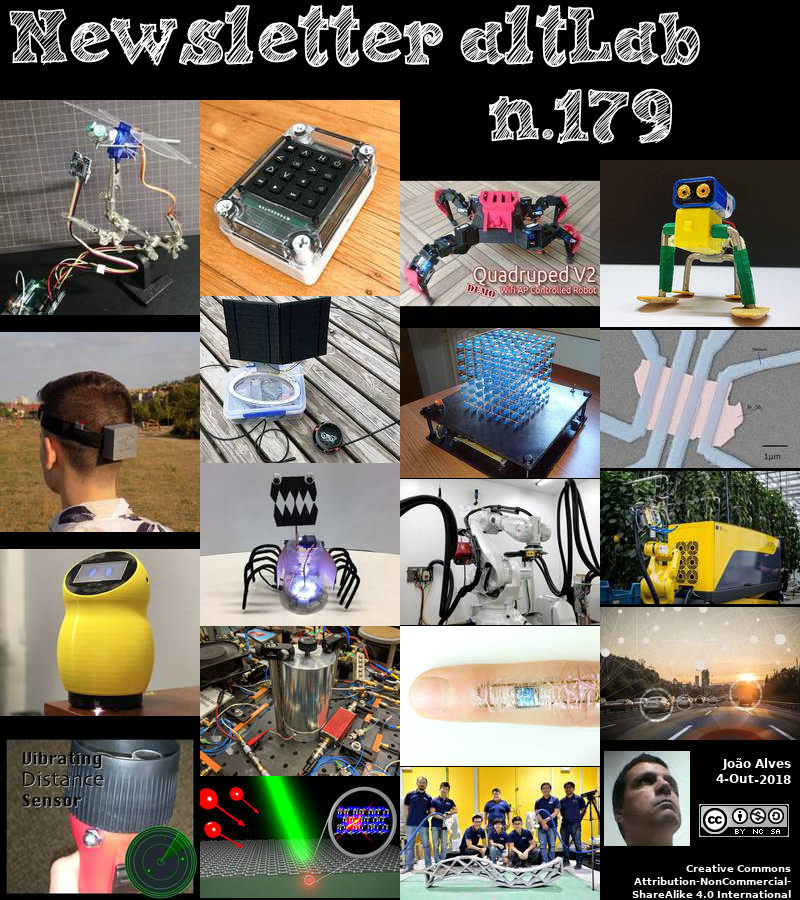
Editorial
Esta é a Newsletter Nº 179 que se apresenta com o mesmo formato que as anteriores. Se gostar da Newsletter partilhe-a!
Todas as Newsletters encontram-se indexadas no link.
Esta Newsletter tem os seguintes tópicos:
Faz hoje anos que nascia, em 1858, Mihajlo Pupin. Este Físico americano-sérvio desenvolveu um mecanismo de ampliar enormemente o alcance da comunicação telefónica de longa distância, colocando bobines de carregamento (de arame) em intervalos predeterminados ao longo do fio transmissor. Pupin tornou-se instrutor de física matemática (1890) na Columbia University, em Nova York. Em 1986, ele descobriu que os átomos atingidos pelos raios X emitem radiação de raios X secundária. Ele também inventou uma forma de tirar fotografias de raio X de curta exposição. A Bell Telephone Company, em 1901, adquiriu a patente de sua invenção para telefonia de longa distância. Pupin ganhou um Prémio Pulitzer (1924) pelo seu trabalho autobiográfico, From Immigrant to Inventor (1923).
Faz também anos hoje que nascia, em 1903, Cyril Stanley Smith. Este Metalúrgico britânico-americano determinou em 1943-44 as propriedades e a tecnologia do plutónio e do urânio, os materiais essenciais nas bombas atómicas que explodiram pela primeira vez em 1945. Smith já tinha então 15 anos de experiência como investigador metalúrgico da American Brass Co. ., durante o qual ele estudou propriedades de ligas e sua micro-estrutura. Na Segunda Guerra Mundial, ele juntou-se ao Laboratório Los Alamos no seu início (1943). As propriedades e tecnologia do plutónio tinham que ser conduzidas com quantidades extremamente limitadas de material disponível. Smith e seu grupo descobriram que era único, com cinco formas alotrópicas diferentes, com enormes diferenças de densidade entre elas.
Faz igualmente anos hoje que nascia, em 1903, John Vincent Atanasoff. Este físico americano foi oficialmente mas tardiamente conhecido pelo desenvolvimento do primeiro computador digital electrónico. Construído em 1937-42 na Universidade do Estado de Iowa por Atanasoff e um estudante de pós-graduação, Clifford Berry, introduziu as ideias de aritmética binária, memória regenerativa e circuitos lógicos. Essas ideias foram comunicadas de Atanasoff a John Mauchly, que as utilizou no projecto do mais conhecido ENIAC, construído e patenteado vários anos depois. Em 19 de outubro de 1973, um juiz federal dos EUA assinou sua decisão após um longo julgamento no tribunal que declarou a patente do ENIAC inválida e nomeou Atanasoff como o inventor original do computador digital electrónico, o Atanasoff-Berry Computer ou ABC.
Faz também anos hoje que nascia, em 1916, Vitaly Ginzburg. Este Físico soviético e astrofísico ficou conhecido pela sua pesquisa sobre a teoria da supercondutividade e a teoria dos processos de alta energia na astrofísica, teorias da propagação de ondas electromagnéticas em plasmas, radioastronomia e a origem dos raios cósmicos. Ele ajudou a desenvolver a bomba de hidrogénio soviética. Em 2003, Ginzburg dividiu o Prémio Nobel de Física (com Alexei A. Abrikosov e Anthony J. Leggett) por “contribuições pioneiras à teoria dos super-condutores e super-fluidos.
Faz igualmente anos hoje que nascia, em 1918, Kenichi Fukui. Este Químico japonês partilhou o Prémio Nobel de Química de 1981 com Roald Hoffmann pela investigação dos mecanismos das reacções químicas. Em 1952, na Universidade de Kyoto, Fukui introduziu sua “teoria de reacções orbitais de fronteira”. Ele propôs que a evolução de uma reacção é determinado pela geometria e energias relativas de orbitais moleculares de reagentes. A teoria explica o ataque electrolítico, por exemplo, que ocorre no átomo de carbono com a maior densidade de electrões de fronteira (energia mais alta). Em meados da década de 1960, Fukui e Hoffmann descobriram - quase simultaneamente e independentemente um do outro - que as propriedades de simetria dos orbitais de fronteira poderiam explicar certos cursos de reacção que antes eram difíceis de entender.
Por fim, faz anos hoje que nascia, em 1924, Maurice Karnaugh. Este físico norte-americano ficou conhecido na historia por ter criado os mapas de Karnaugh. O mapa de Karnaugh (KM ou K-map) é um método de simplificação das expressões de álgebra booleana.
Nesta semana que passou ficámos a saber que existem fortes indícios que espiões chineses conseguiram infiltrar-se em mais de 30 companhias de tecnologia norte-americanas através da colocação de um chip nas motherboards dos servidores usados por estas companhias. As motherboards foram fabricadas na china pela Supermicro e os chips foram implantados em fabricas que forneciam a Supermicro. Posteriormente quando um servidor era instalado e ligado, o chip alterava o núcleo do sistema operativo para aceitar modificações. O chip também poderia entrar em contacto com computadores controlados pelos espiões em busca de mais ordens e/ou código mais recente.
Também esta semana a Wi-Fi Alliance introduziu o Wi-Fi 6. A Wi-Fi Alliance apresenta o Wi-Fi 6 como a designação da indústria para produtos e redes que suportam a próxima geração de Wi-Fi®, com base na tecnologia 802.11ax. O Wi-Fi 6 faz parte de uma nova abordagem de nomenclatura da Wi-Fi Alliance, que fornece aos utilizadores uma designação de fácil compreensão para a tecnologia Wi-Fi suportada pelo seu dispositivo e usada numa ligação que o dispositivo faz com uma rede Wi-Fi. O novo sistema de nomeação identifica as gerações de Wi-Fi por uma sequência numérica que corresponde aos principais avanços no Wi-Fi. Os nomes de geração podem ser usados por fornecedores de produtos para identificar a tecnologia Wi-Fi mais recente que um dispositivo suporta, por fornecedores de SO para identificar a geração de conexão Wi-Fi entre um dispositivo e a rede e por provedores de serviço para identificar os recursos de uma rede Wi-Fi para seus clientes.
Também esta semana a NASA anunciou que vai proceder ao "Switch" temporário dos 'Brains' do rover Curiosity. Engenheiros do Laboratório de Propulsão a Jato da NASA em Pasadena, Califórnia, nesta semana, ordenaram que o rover Curiosity da agência mudasse para seu segundo computador. A troca permitirá que os engenheiros façam um diagnóstico detalhado de um problema técnico que impediu que o computador activo do rover armazene informação e alguns dados importantes de engenharia desde 15 de Setembro.
Na Newsletter desta semana apresentamos diversos projetos de maker.
 João Alves ([email protected])
João Alves ([email protected])
O conteúdo da Newsletter encontra-se sob a licença  Creative Commons Attribution-NonCommercial-ShareAlike 4.0 International License.
Creative Commons Attribution-NonCommercial-ShareAlike 4.0 International License.
Novidades da Semana
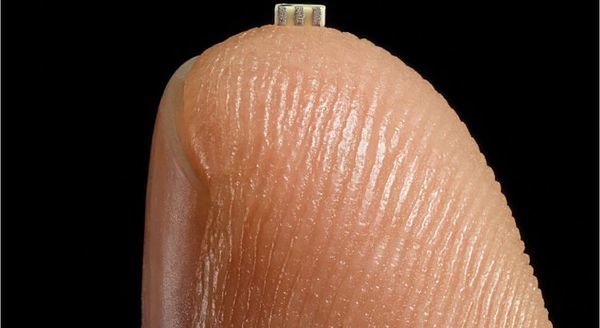
The Big Hack: How China Used a Tiny Chip to Infiltrate U.S. Companies
"The attack by Chinese spies reached almost 30 U.S. companies, including Amazon and Apple, by compromising America’s technology supply chain, according to extensive interviews with government and corporate sources. In 2015, Amazon.com Inc. began quietly evaluating a startup called Elemental Technologies, a potential acquisition to help with a major expansion of its streaming video service, known today as Amazon Prime Video. Based in Portland, Ore., Elemental made software for compressing massive video files and formatting them for different devices. Its technology had helped stream the Olympic Games online, communicate with the International Space Station, and funnel drone footage to the Central Intelligence Agency. Elemental’s national security contracts weren’t the main reason for the proposed acquisition, but they fit nicely with Amazon’s government businesses, such as the highly secure cloud that Amazon Web Services (AWS) was building for the CIA. To help with due diligence, AWS, which was overseeing the prospective acquisition, hired a third-party company to scrutinize Elemental’s security, according to one person familiar with the process." [...]
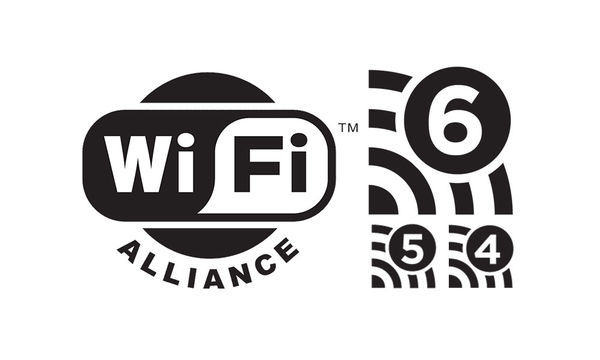
Wi-Fi Alliance introduces Wi-Fi 6
"New generational approach enables users to easily differentiate between Wi-Fi® technologies Wi-Fi Alliance® introduces Wi-Fi 6 as the industry designation for products and networks that support the next generation of Wi-Fi®, based on 802.11ax technology. Wi-Fi 6 is part of a new naming approach by Wi-Fi Alliance that provides users with an easy-to-understand designation for both the Wi-Fi technology supported by their device and used in a connection the device makes with a Wi-Fi network. The new naming system identifies Wi-Fi generations by a numerical sequence which correspond to major advancements in Wi-Fi. The generation names can be used by product vendors to identify the latest Wi-Fi technology a device supports, by OS vendors to identify the generation of Wi-Fi connection between a device and network, and by service providers to identify the capabilities of a Wi-Fi network to their customers. The generational terminology may also be used to designate previous Wi-Fi generations, such as 802.11n or 802.11ac. The numerical sequence includes: Wi-Fi 6 to identify devices that support 802.11ax technology Wi-Fi 5 to identify devices that support 802.11ac technology Wi-Fi 4 to identify devices that support 802.11n technology Each generation of Wi-Fi offers new features – faster speeds, increased throughput, and better experiences." [...]

Curiosity Rover to Temporarily Switch 'Brains'
"NASA Curiosity Mission Status Report Engineers at NASA's Jet Propulsion Laboratory in Pasadena, California, this week commanded the agency's Curiosity rover to switch to its second computer. The switch will enable engineers to do a detailed diagnosis of a technical issue that has prevented the rover's active computer from storing science and some key engineering data since Sept. 15. Like many NASA spacecraft, Curiosity was designed with two, redundant computers -- in this case, referred to as a Side-A and a Side-B computer -- so that it can continue operations if one experiences a glitch. After reviewing several options, JPL engineers recommended that the rover switch from Side B to Side A, the computer the rover used initially after landing. The rover continues to send limited engineering data stored in short-term memory when it connects to a relay orbiter. It is otherwise healthy and receiving commands." [...]
Outras Notícias

AVR Microcontrollers Now Supported in MPLAB X Integrated Development Environment
"Designers who have traditionally used Microchip’s PIC® microcontrollers (MCUs) and developed with the MPLAB® ecosystem can now easily evaluate and incorporate AVR® MCUs into their applications. The majority of AVR MCUs are now beta supported with the release of MPLAB X Integrated Development Environment (IDE) version 5.05, available today from Microchip Technology Inc. (Nasdaq: MCHP). Support for additional AVR MCUs and enhancements will be added in future MPLAB versions. AVR support will continue to be added to Atmel Studio 7 and Atmel START for current and future AVR devices. For more information visit: www.microchip.com/AVRandMPLAB. MPLAB X IDE version 5.05 provides a unified development experience that is both cross-platform and scalable with compatibility on Windows®, macOS® and Linux® operating systems, allowing designers to develop with AVR MCUs on their hardware system of choice." [...]

New full-scale Hyperloop passenger capsule revealed
"A new, full-size Hyperloop capsule designed to carry passengers at 1,000 kilometers per hour (620 mph) was unveiled Tuesday, offering a glimpse at what could be the future of travel. Hyperloop is the megafast, cutting edge transport technology first envisaged by controversial business magnate Elon Musk. It's designed to transport people through low-pressure steel tubes at speeds to match a typical passenger aircraft. Several companies are now competing to be the first to make the Hyperloop concept a reality. Hyperloop Transportation Technologies, a US start-up with no connections to Musk, hopes its new full-size prototype capsule puts it ahead in the game. The sleek capsule was unveiled Puerto de Santa Maria, Spain, near where it was constructed at the aerospace facilities of Airtificial, a partner of HyperloopTT." [...]
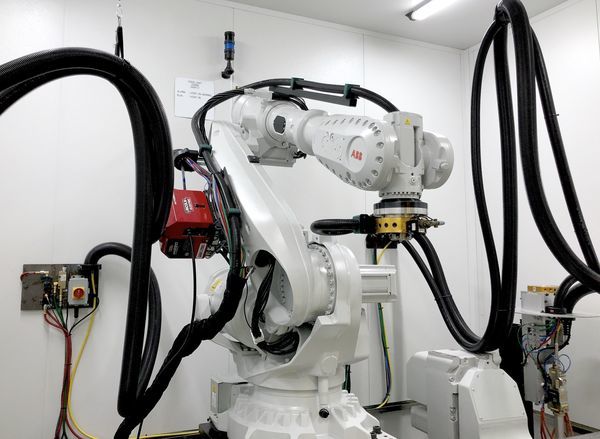
Lockheed Martin Contract To Marry Machine Learning With 3-D Printing For More Reliable Parts
"Today, 3-D printing generates parts used in ships, planes, vehicles and spacecraft, but it also requires a lot of babysitting. High-value and intricate parts sometimes require constant monitoring by expert specialists to get them right. Furthermore, if any one section of a part is below par, it can render the whole part unusable. That's why Lockheed Martin (NYSE: LMT) and the Office of Naval Research are exploring how to apply artificial intelligence to train robots to independently oversee—and optimize—3-D printing of complex parts. The two-year, $5.8 million contract specifically studies and will customize multi-axis robots that use laser beams to deposit material. The team led by Lockheed Martin's Advanced Technology Center will develop software models and sensor modifications for the robots to build better components." [...]

Bizarre Particles Keep Flying Out of Antarctica's Ice, and They Might Shatter Modern Physics
"There's something mysterious coming up from the frozen ground in Antarctica, and it could break physics as we know it. Physicists don't know what it is exactly. But they do know it's some sort of cosmic ray — a high-energy particle that's blasted its way through space, into the Earth, and back out again. But the particles physicists know about — the collection of particles that make up what scientists call the Standard Model (SM) of particle physics — shouldn't be able to do that. Sure, there are low-energy neutrinos that can pierce through miles upon miles of rock unaffected. But high-energy neutrinos, as well as other high-energy particles, have "large cross-sections."" [...]

Newfound Dwarf Planet 'The Goblin' May Lead to Mysterious Planet Nine
"Scientists have discovered yet another marker on the trail toward the putative Planet Nine. That clue is 2015 TG387, a newfound object in the far outer solar system, way beyond Pluto. The orbit of 2015 TG387 shares peculiarities with those of other extremely far-flung bodies, which appear to have been shaped by the gravity of a very large object in that distant, frigid realm — the hypothesized Planet Nine, also known as Planet X. "These distant objects are like breadcrumbs leading us to Planet X," study leader Scott Sheppard, of the Carnegie Institution for Science in Washington, D.C., said in a statement. [The Evidence for 'Planet Nine' in Our Solar System (Gallery)] "The more of them we can find, the better we can understand the outer solar system and the possible planet that we think is shaping their orbits — a discovery that would redefine our knowledge of the solar system's evolution," he added. And 2015 TG387 is special among these bread crumbs, because it was found during a relatively uniform survey of the northern and southern skies rather than a targeted hunt for clustered objects in certain parts of the sky, Sheppard said." [...]
Ciência e Tecnologia

New Research Could Lead To More Energy-efficient Computing
"Computers in the future could be more energy-efficient, thanks to new research from Binghamton University, State University at New York. Devices like drones depend on a constant WiFi signal – if the WiFi stops, the drone crashes. Louis Piper, associate professor of physics and director of materials science and engineering at Binghamton University, wants to make more energy-efficient computers, so things like drones could be responsive to their environment without worrying about a WiFi signal linking it to a larger computer machine. “You could put 5G and 6G everywhere and assume that you have a reliable internet connection all the time, or you could address the problem with hardware processing, which is what we’re doing,” said Piper. “The idea is we want to have these chips that can do all the functioning in the chip, rather than messages back and forth with some sort of large server. It should be more efficient that way.” Scientists have developed “neuristor” circuits that behave similarly to biological neurons in the human brain, which can perform complex computations using an incredibly small amount of power." [...]
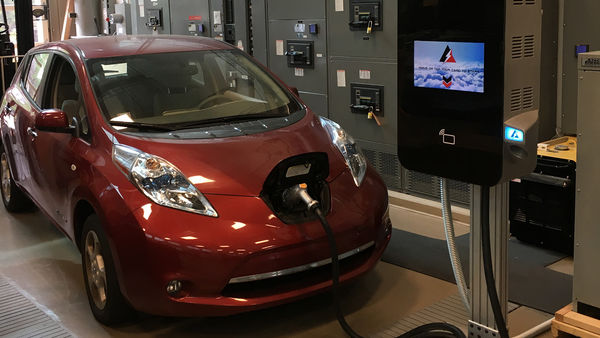
New Electric Car Charger is More Efficient, 10 Times Smaller Than Current Tech
"Researchers at North Carolina State University have built an electric vehicle fast charger that is at least 10 times smaller than existing systems and wastes 60 percent less power during the charging process, without sacrificing the charging time. The team is now building a version that is capable of charging vehicles more quickly, while also charging multiple vehicles at the same time. The new technology is called a medium voltage fast charger (MVFC). Conventional, 50 kilowatt (kW) state-of-the-art chargers include a distribution transformer, which weighs 1000 kilograms, and a separate fast charger unit, which weighs 200 to 600 kg. To support the weight, this transformer-and-charger system usually needs to be installed on a concrete slab. The transformer takes power from a utility medium-voltage line line and steps down the voltage to 480 V so that it that can be used by the fast charger." [...]
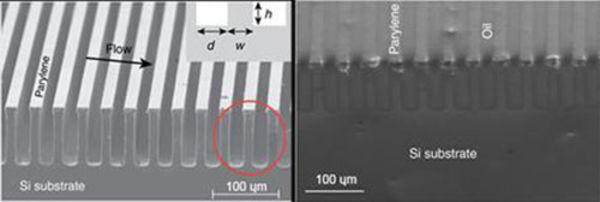
Flowing Salt Water Over This Super-Hydrophobic Surface Can Generate Electricity
"Engineers at the University of California San Diego have developed a super-hydrophobic surface that can be used to generate electrical voltage. When salt water flows over this specially patterned surface, it can produce at least 50 millivolts. The proof-of-concept work could lead to the development of new power sources for lab-on-a-chip platforms and other microfluidics devices. It could someday be extended to energy harvesting methods in water desalination plants, researchers said. A team of researchers led by Prab Bandaru, a professor of mechanical and aerospace engineering at the UC San Diego Jacobs School of Engineering, and first author Bei Fan, a graduate student in Bandaru’s research group, published their work in the Oct. 3 issue of Nature Communications. The main idea behind this work is to create electrical voltage by moving ions over a charged surface." [...]
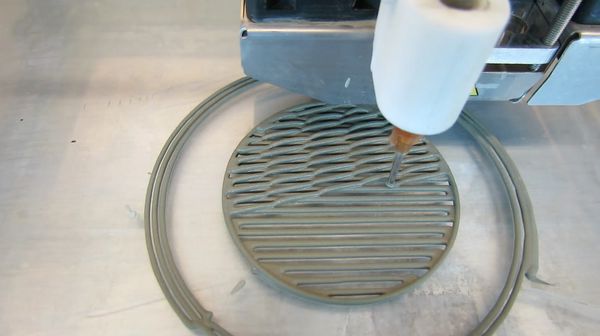
New 3D-printed cement paste gets stronger when it cracks - just like structures in nature
"Purdue University researchers have 3D-printed cement paste, a key ingredient of the concrete and mortar used to build various elements of infrastructure, that gets tougher under pressure like the shells of arthropods such as lobsters and beetles. The technique could eventually contribute to more resilient structures during natural disasters. "Nature has to deal with weaknesses to survive, so we are using the 'built-in' weaknesses of cement-based materials to increase their toughness," said Jan Olek, a professor in Purdue's Lyles School of Civil Engineering. The idea would be to use designs inspired by arthropod shells to control how damage spreads between the printed layers of a material, like trying to break a bunch of uncooked spaghetti noodles as opposed to a single noodle. "The exoskeletons of arthropods have crack propagation and toughening mechanisms that we can reproduce in 3D-printed cement paste," said Pablo Zavattieri, Purdue professor of civil engineering. 3D-printed cement-based materials – such as cement paste, mortar and concrete – would give engineers more control over design and performance, but technicalities have stood in the way of scaling them up." [...]

Toughening up polymers
"Adding nanoparticles to a polymer matrix enhances the thermo-mechanical properties of the materials A*STAR researchers have toughened up polylactic acid while maintaining its elasticity by adding core-shell nanoparticles as a filler1. Polylactic acid (PLA) is a biodegradable and highly biocompatible polymer with good thermal processibility, which has found widespread use in biomedical applications and as a packaging material. However, it is brittle and has poor mechanical stability, so it is often modified by adding reinforcing polymers and by incorporating different polymerization methods. Unfortunately, these modifications also reduce the material's strength and elastic modulus, which limits its applications. Now, Chaobin He, Beng Hoon Tan and colleagues at the A*STAR Institute of Materials Research and Engineering, Singapore, report the increased toughness of PLA, while maintaining the strength and modulus of the material, by the addition of core-shell nanoparticles as a filler. The nanoparticles have silica cores with rubber chains covalently linked to the silica, and poly(D-lactic acid) (PDLA) grafted onto the outer shell." [...]
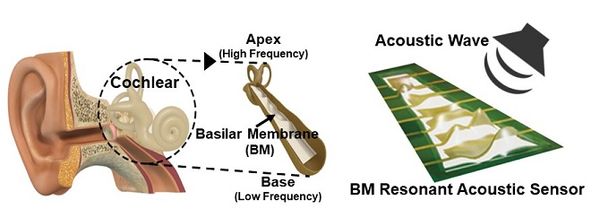
Flexible Piezoelectric Acoustic Sensors for Speaker Recognition
"A KAIST research team led by Professor Keon Jae Lee from the Department of Material Science and Engineering has developed a machine learning-based acoustic sensor for speaker recognition. Acoustic sensors were spotlighted as one of the most intuitive bilateral communication devices between humans and machines. However, conventional acoustic sensors use a condenser-type device for measuring capacitance between two conducting layers, resulting in low sensitivity, short recognition distance, and low speaker recognition rates. The team fabricated a flexible piezoelectric membrane by mimicking the basilar membrane in the human cochlear. Resonant frequencies vibrate corresponding regions of the trapezoidal piezoelectric membrane, which converts voice to electrical signal with a highly sensitive self-powered acoustic sensor. This multi-channel piezoelectric acoustic sensor exhibits sensitivity more than two times higher and allows for more abundant voice information compared to conventional acoustic sensors, which can detect minute sounds from farther distances." [...]

A New Brain-Inspired Architecture Could Improve How Computers Handle Data and Advance AI
"IBM researchers designed a new computer architecture with co-located memory and processing. In studies, their prototype ran 200 times faster than conventional computers. IBM researchers are developing a new computer architecture, better equipped to handle increased data loads from artificial intelligence. Their designs draw on concepts from the human brain and significantly outperform conventional computers in comparative studies. They report on their recent findings in the Journal of Applied Physics, from AIP Publishing. Today’s computers are built on the von Neumann architecture, developed in the 1940s." [...]

Single Atoms Break Carbon's Strongest Bond
"Scientists discovered that single atoms of platinum can break the bond between carbon and fluorine, one of the strongest known chemical bonds An international team of scientists including researchers at Yale University and the U.S. Department of Energy’s (DOE) Brookhaven National Laboratory have developed a new catalyst for breaking carbon-fluorine bonds, one of the strongest chemical bonds known. The discovery, published on Sept. 10 in ACS Catalysis, is a breakthrough for efforts in environmental remediation and chemical synthesis. “We aimed to develop a technology that could degrade polyfluoroalkyl substances (PFAS), one of the most challenging pollutant remediation problems of the present day,” said Jaehong Kim, a professor in the department of chemical and environmental engineering at Yale University. “PFAS are widely detected all over the world, from Arctic biota to the human body, and concentrations in contaminated groundwater significantly exceed the regulatory limit in many areas. Currently, there are no energy-efficient methods to destroy these contaminants. Our collaboration with Brookhaven Lab aims to solve this problem by taking advantage of the unique properties of single atom catalysts.” Synthesizing smaller, more efficient catalysts To optimize the efficiency of catalysts—substances that initiate or speed-up chemical reactions—scientists break them down into smaller pieces, all the way down to nanomaterials." [...]
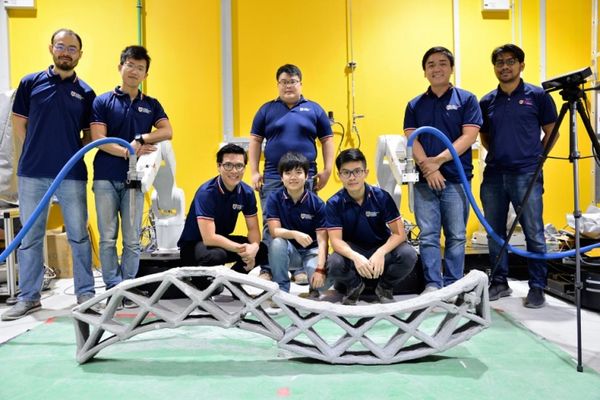
NTU Singapore scientists develop smart technology for synchronised 3D printing of concrete
"Scientists from Nanyang Technological University, Singapore (NTU Singapore) have developed a technology where two robots can work in unison to 3D-print a concrete structure. This method of concurrent 3D-printing, known as swarm printing, paves the way for a team of mobile robots to print even bigger structures in future. Developed by Assistant Professor Pham Quang Cuong and his team at NTU’s Singapore Centre for 3D Printing, this new multi-robot technology was published in Automation in Construction, a top tier journal for civil engineering. The NTU scientist was also behind the Ikea Bot earlier this year where two robots assembled an Ikea chair in 8 min 55s. Using a specially formulated cement mix suitable for 3-D printing, this new development will allow for unique concrete designs currently not possible with conventional casting. Structures can also be produced on demand and in a much shorter period." [...]
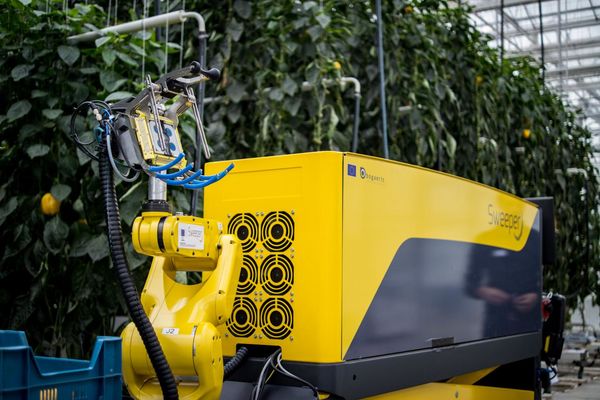
New Robot Picks a Peck of Peppers and More
"The world's most advanced sweet pepper harvesting robot, developed in a consortium including BGU researchers, was introduced recently at the Research Station for Vegetable Production at St. Katelijne Waver in Belgium. SWEEPER is designed to operate in a single stem row cropping system, with non-clustered fruits and little leaf occlusion. Preliminary test results showed that by using a commercially available crop modified to mimic the required conditions, the robot currently harvests ripe fruit in 24 seconds with a success rate of 62 percent. The BGU team spearheaded efforts to improve the robot's ability to detect ripe produce using computer vision, and has played a role in defining the specifications of the robot's hardware and software interfaces, focusing on supervisory control activities. Polina Kurtser, a Ph.D. candidate in BGU's Department of Industrial Engineering and Management and member of the team, says robotic harvesting will revolutionize the economics of the agriculture industry and dramatically reduce food waste. "The Sweeper picks methodically and accurately," she says." [...]
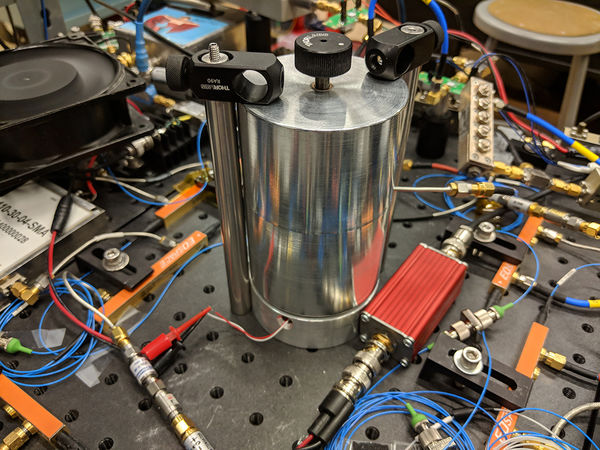
NIST's Electro-Optic Laser Pulses 100 Times Faster Than Usual Ultrafast Light
"Physicists at the National Institute of Standards and Technology (NIST) have used common electronics to build a laser that pulses 100 times more often than conventional ultrafast lasers. The advance could extend the benefits of ultrafast science to new applications such as imaging of biological materials in real time. The technology for making electro-optic lasers has been around for five decades, and the idea seems alluringly simple. But until now researchers have been unable to electronically switch light to make ultrafast pulses and eliminate electronic noise, or interference. As described in the Sept. 28 issue of Science, NIST scientists developed a filtering method to reduce the heat-induced interference that otherwise would ruin the consistency of electronically synthesized light. “We tamed the light with an aluminum can,” project leader Scott Papp said, referring to the “cavity” in which the electronic signals are stabilized and filtered." [...]

A self-powered heart monitor taped to the skin
"Scientists have developed a human-friendly, ultra-flexible organic sensor powered by sunlight, which acts as a self-powered heart monitor. Previously, they developed a flexible photovoltaic cell that could be incorporated into textiles. In this study, they directly integrated a sensory device, called an organic electrochemical transistor—a type of electronic device that can be used to measure a variety of biological functions—into a flexible organic solar cell. Using it, they were then able to measure the heartbeats of rats and humans under bright light conditions. Self-powered devices that can be fit directly on human skin or tissue have great potential for medical applications. They could be used as physiological sensors for the real-time monitoring of heart or brain function in the human body." [...]
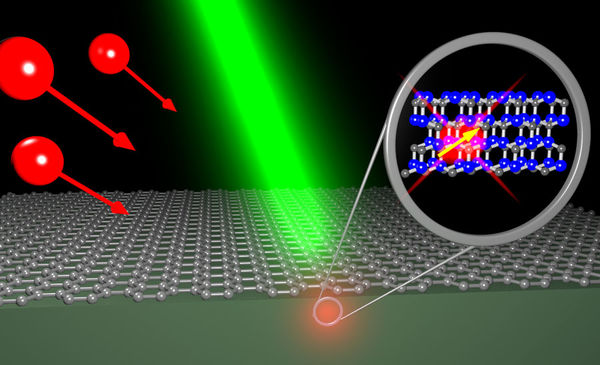
A 'Recipe Book' that Creates Color Centers in Silicon Carbide Crystals
"Researchers are documenting the different temperature and proton dosages required to make defects that will further allow silicon carbide to be used for quantum technology. Silicon carbide (SiC), a material known for its toughness with applications from abrasives to car brakes, to high-temperature power electronics, has enjoyed renewed interest for its potential in quantum technology. Its ability to house optically excitable defects, called color centers, has made it a strong candidate material to become the building block of quantum computing. Now, a group of researchers has created a list of “recipes” physicists can use to create specific types of defects with desired optical properties in SiC. In one of the first attempts to systematically explore color centers, the group used proton irradiation techniques to create the color centers in silicon carbide. They adjusted proton dose and temperature to find the right conditions that reliably produce the desired type of color center." [...]
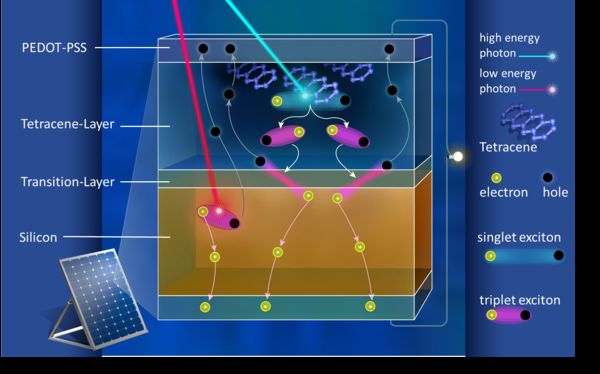
HZB researchers are used to boost the efficiency of silicon solar cells
"The efficiency of a solar cell is one of its most important parameters. It indicates what percentage of the solar energy radiated into the cell is converted into electrical energy. The theoretical limit for silicon solar cells is 29.3 percent due to physical material properties. In the journal Materials Horizons, researchers from Helmholtz-Zentrum Berlin (HZB) and international colleagues describe how this limit can be abolished. The trick: they incorporate layers of organic molecules into the solar cell. These layers utilise a quantum mechanical process known as singlet exciton fission to split certain energetic light (green and blue photons) in such a way that the electrical current of the solar cell can double in that energy range." [...]
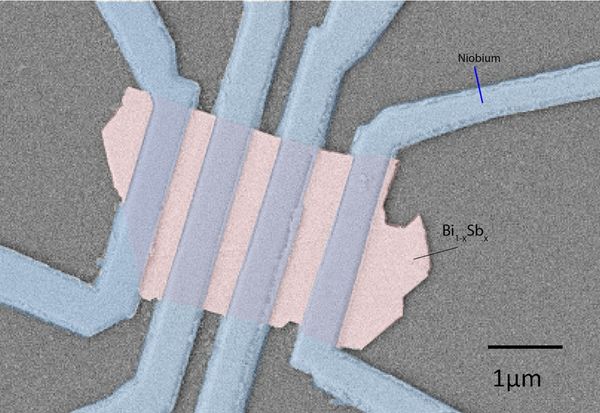
Superconductivity where you don't expect it topological materials keep surprising
"The special properties of ‘topological materials’ typically occur at their surface. These materials, for example insulators that do conduct current at their surface, are expected to play a major role in future quantum computers. Scientists of the University of Twente and the University of Amsterdam now demonstrate a new property: the non-superconducting material bismuth shows lossless current conduction. What's even more special: it doesn’t just occur at the surface but in the inside, the bulk, of the material as well. The scientists publish their findings in Nature Materials of October. In a special review on this paper, the results are called ‘truly desired and inspiring’." [...]
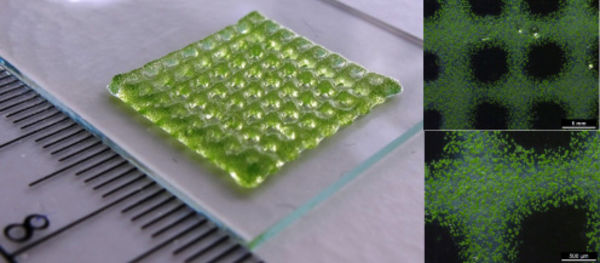
3D bioprinting of living structures with built-in chemical sensors
"BIOPRINTNING A new method enables non-invasive monitoring of oxygen metabolism in cells that are 3D bioprinted into complex living structures. This has great implications for studies of cell growth and interactions e.g. under tissue-like conditions, as well as for the design of 3D printed constructs facilitating higher productivity of microalgae in biofilms or better oxygen supply for stem cells used in bone and tissue reconstruction efforts. An international team of researchers led by Professor Michael Kühl at the Department of Biology, University of Copenhagen has just published a breakthrough in 3D bioprinting. Together with German colleagues at the Technical University of Dresden (Centre for Translational Bone, Joint and Soft Tissue Research), Professor Kühls group implemented oxygen sensitive nanoparticles into a gel material that can be used for 3D printing of complex, biofilm and tissue like structures harboring living cells as well as built-in chemical sensors. The work has just been published in the leading materials science journal, Advanced Functional Materials." [...]

Microresonators offer a simpler approach to sensing with light pulses
"Ultrashort optical pulses are becoming more and more relevant in a number of applications including distance measurement, molecular fingerprinting and ultrafast sampling. Many of these applications rely not only on a single stream of pulses – also known as “optical frequency combs” – but require two or even three of them. Nonetheless, these multi-comb approaches significantly speed up acquisition time over conventional techniques. These trains of short optical pulses are typically produced by large pulsed laser sources. Multi-comb applications therefore require several such lasers, often at prohibitive costs and complexity. Furthermore, the relative timing of pulse trains and their phases must be very well synchronized, which requires active electronics that synchronize the lasers." [...]

Model helps robots navigate more like humans do
"In simulations, robots move through new environments by exploring, observing, and drawing from learned experiences. When moving through a crowd to reach some end goal, humans can usually navigate the space safely without thinking too much. They can learn from the behavior of others and note any obstacles to avoid. Robots, on the other hand, struggle with such navigational concepts. MIT researchers have now devised a way to help robots navigate environments more like humans do. Their novel motion-planning model lets robots determine how to reach a goal by exploring the environment, observing other agents, and exploiting what they’ve learned before in similar situations." [...]
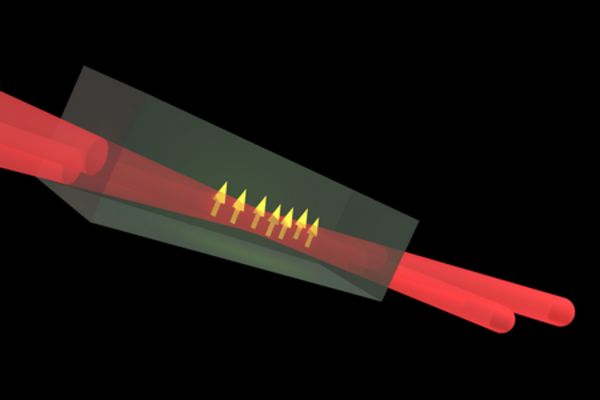
Defects promise quantum communication through standard optical fiber
"An international team of scientists led by the University of Groningen's Zernike Institute for Advanced Materials has identified a way to create quantum bits that emit photons that describe their state at wavelengths close to those used by telecom providers. These qubits are based on silicon carbide in which molybdenum impurities create color centers. The results were published in the journal npj Quantum Information on 1 October. By using phenomena like superposition and entanglement, quantum computing and quantum communication promise superior computing powers and unbreakable cryptography. Several successes in transmitting these quantum phenomena through optical fibers have been reported, but this is typically at wavelengths that are incompatible with the standard fibers currently used in worldwide data transmission. Defects Physicists from the University of Groningen in the Netherlands together with colleagues from Linköping University and semiconductor company Norstel AB, both in Sweden, have now published the construction of a qubit that transmits information on its status at a wavelength of 1,100 nanometers." [...]
Projetos Maker
Diversos Projetos interessantes.
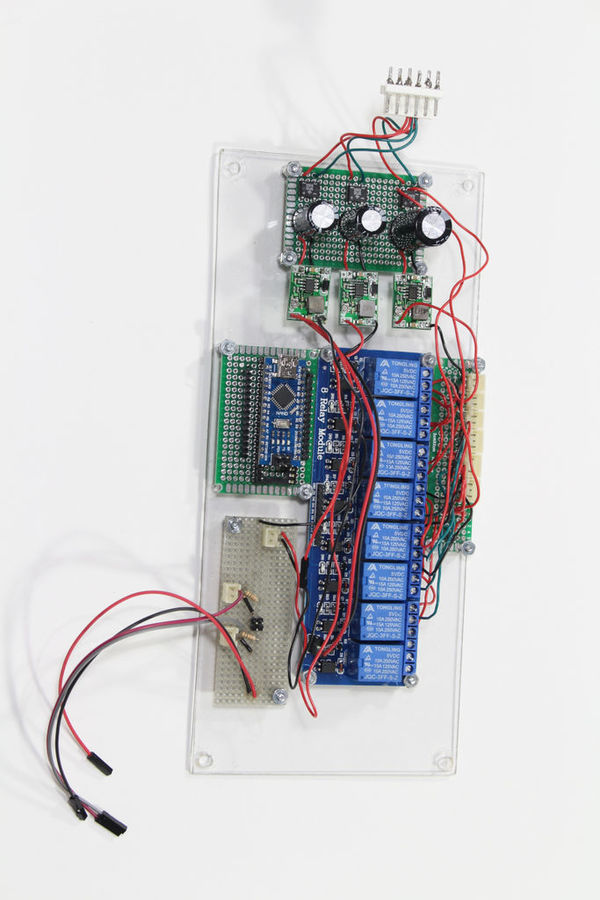
Replace Your Pool and Spa Controller With Raspberry Pi, Arduino, Node Red
"In this Instructable I will describe how to build a pool and spa controller that controls a pump motor, multiple electric valve actuators, lights, a cleaner, air blower, and heater. It also measures the water and air temperatures. I built this to replace an old Compool pool controller which broke. The Compool model I had is obsolete and replacing it with a new controller and associated parts would cost around $800. I built this replacement for about $75 (using some parts I already had - buying all new will run about $100). This pool controller uses Node Red on a Raspberry Pi to provide a web interface for controlling the various devices and displaying the temperatures." [...]
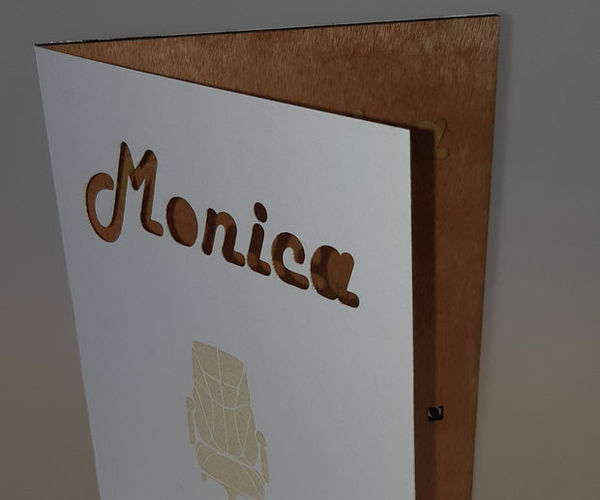
Musical Card (ATtiny85)
"One of my team was leaving and I thought what better way to wish her all the best than with a singing card. Components - Passive piezo buzzer - ATtiny85 - Lithium Button Cell Battery (CR2450) - Momentary button (type commonly used with an Arduino) - 10uF Capcitor (used when programming the ATtiny85) Materials - Glue (PVA & Craft glue) - 4mm Plywood - Card (A5) - Paper (A4) - Solder - Varnish Tools - Arduino - Soldering Iron - Wire cutters/strippers - CO2 Laser cutter - CNC Machine Software - Inkscape - FreeCAD - MuseScore Create or download the MIDI file of your choice. I wanted auld lang syne and so I downloaded an existing MIDI file from the web. I then used MuseScore to edit the file, removing surplice notes and lyrics. In editing the notes, I removed Staff 2 so that there was only Staff 1 and wherever there were double notes (or more) I left just the highest one. Once complete I used save as to save the edited file back as a MIDI file." [...]

Two bits per transistor: high-density ROM in Intel's 8087 floating point chip
"The 8087 chip provided fast floating point arithmetic for the original IBM PC and became part of the x86 architecture used today. One unusual feature of the 8087 is it contained a multi-level ROM (Read-Only Memory) that stored two bits per transistor, twice as dense as a normal ROM. Instead of storing binary data, each cell in the 8087's ROM stored one of four different values, which were then decoded into two bits. Because the 8087 required a large ROM for microcode1 and the chip was pushing the limits of how many transistors could fit on a chip, Intel used this special technique to make the ROM fit. In this article, I explain how Intel implemented this multi-level ROM. Intel introduced the 8087 chip in 1980 to improve floating-point performance on the 8086 and 8088 processors." [...]
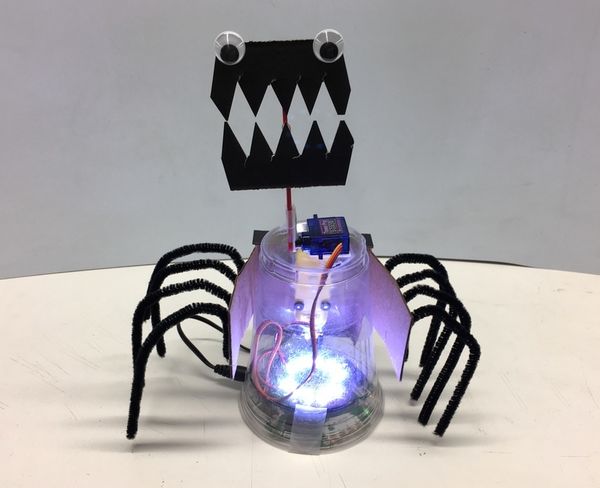
Halloween Sentry-Bot with CRICKIT for CPX
"This sentry robot will wait quietly for someone to pass by, then it springs to life! A lot of fun anytime or make it especially for Halloween. Using MakeCode drag and drop blocks you will make a scary monster that can protect all your precious, precious candy. In addition to basic programming concepts, this guide also demonstrates the construction of a simple mechanical movement, translating rotary motion into linear motion. " [...]
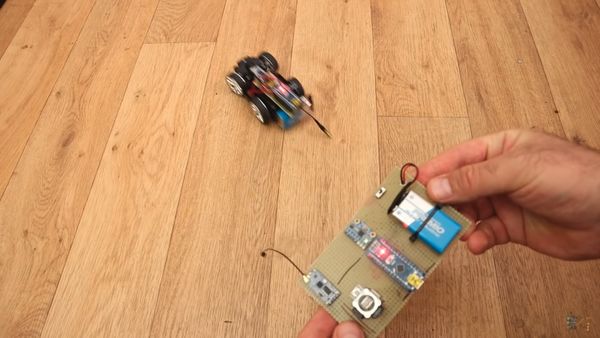
Gyro radio controller
"This is a radio controller that has 2 analog channels and the data is out from a MPU6050 gyro module. So, we could control a toy car for example just by rotating the controller. I usually use the NRF24 module, but in this project I also want to show you how to use the HC12 module. You will learn how to get the IMU data, how to use the HC12 radio connection and how to control 2 DC motors using PWM signals and an H-bridge. The radio transmitter is simple. In the middle we haev the MPU6050 gyro mdoule so we could detect the angle of the controller." [...]
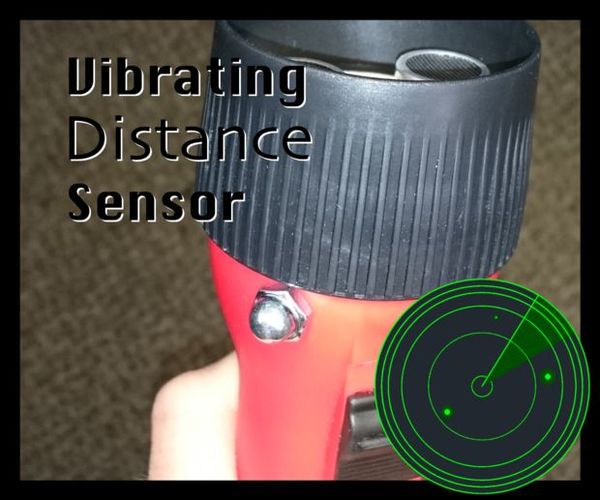
Vibrating Distance Sensor
"Imagine waking up next to a light sleeper and you have to get to the bathroom but you're in an pitch black hotel room. Even a flashlight will wake him or her up but you can't hold it for the next three hours when the alarm goes off. What if you could navigate a hotel room like a bat navigates a cave? With a vibrating distance sensor you can "feel" walls up to fifteen feet away rather than groping blindly. The vibrating distance sensor gives you sonar vision with no training. The flashlight enclosure is easy to build and intuitive to use." [...]

Solar-powered IoT Ultrasonic Oil Tank Monitor by Steve M. Potter
"Do you have a tank whose fluid level you want to keep track of? Even if not, you may have an idea for an IoT project, or a solar-powered project, or a Particle Photon project. This Instructable includes many useful details and photos that will teach you (among other things): How to choose and use ultrasonic rangefindersHow to measure small bidirectional DC currents with an Arduino (battery charging and discharging)How to log and share sensor data in the cloudHow to charge your outdoor IoT project with a solar panelHow to deal with varying or unmatched voltagesDebugging. Not bugs in software, but actual bugs!I describe here a system that will send your phone and computers a Pushbullet warning if the tank needs filling. It includes data logging in the ThingSpeak cloud to monitor and share usage and other data. We have a 1000-litre kerosene tank outside our house that supplies heating oil to our boiler, which in turn distributes the hot water to radiators around the house." [...]
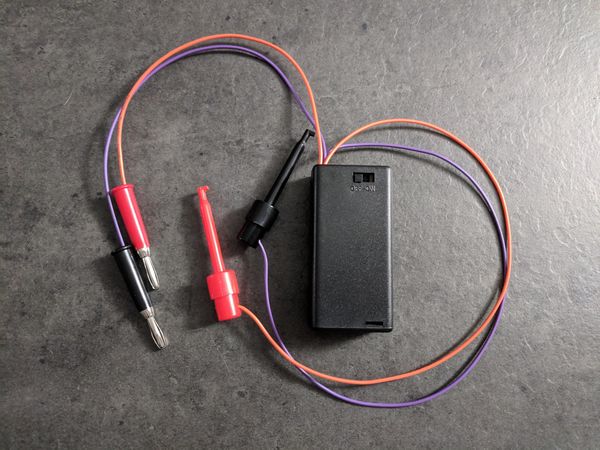
Pocket High Voltage Generator Quick Build
"There are times you find yourself looking for a relatively high voltage (100V to 200V often in my case) but low current DC power supply. I have zener diodes that are higher than 30V, which makes the lab supply useless, and filament LEDs with forward voltage over 60V. When I need to test them quickly, I used to hook up a simple rectifier circuit to a variable AC power supply (nothing more than a slidac with isolation transformer). While this gets job done, the setup is capable of supplying much too high current (1A or more), so I was always very nervous and extra careful in handling the circuit. All I need is a little HV generator that gives me around 200V DC and only capable of supplying a milliamp or less. Realizing that I do have such design available – one of the Nixie supply circuit – I just decided to put one together to use." [...]

Head Swinging Dragonfly
"I made dragonfly. The dragonfly swings head with a gesture sensor and a servo motor. " [...]

How to Make Walking Robot - DIY Robot
"Robot toys can be seen almost everywhere these days. There are variety of toys for kids are available in the market that it becomes very difficult to choose. Recently, is a saw a four legged walking robot but it was quite a complex mechanism. I then wanted to make a mini cute robot that can be easily made by anyone with just few basic materials. So, I decided to make this instructable in which i show how to make a simple and cute walking robot just with a single DC motor and a 9v battery. Although, this DIY robot is yet nowhere comparable to a commercial robot toys but it is very simple to make and a fun toy for kids." [...]
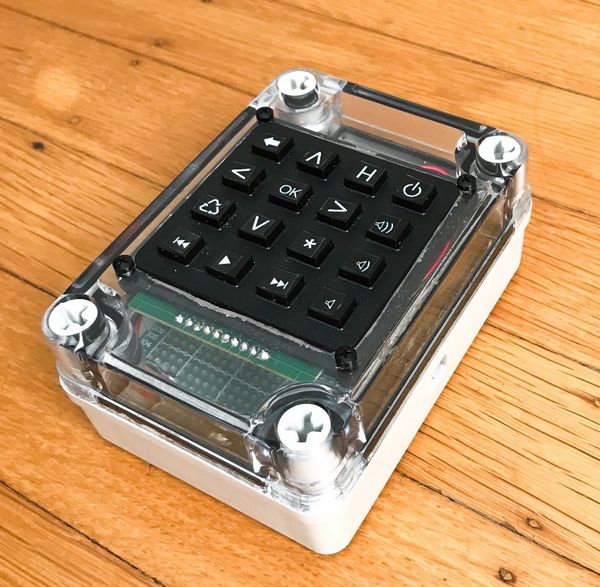
Building a better and bulkier Roku remote
"The Roku TV is perfect for watching Netflix but I don't like the remote. Although the little box is small and easy to use, the infrared range is pretty bad. I almost always reach out for the iOS app instead. The Roku External Control API offers a super simple way to control a Roku device from the local network. For instance, once you find out the local IP address of your Roku, you can turn it on and control the volume from your terminal. " [...]

Mega Blaster
"A Sega Genesis music player based off of the STM32 BluePill board and real YM2612+SN76489 sound chips. This project is a hardware Video Game Music (VGM) player that uses a genuine YM2612 synthesizer chip + SN76489AN PSG. This project is driven by an STM32 "Blue Pill" board, chosen for it's ample speed, I/O, and best of all, price! Included in this repository is the source code for the project, all of the schematic files, and a completed Ki-CAD printed circuit board /w Gerber files. Feel free to produce your own board! The YM2612 is a 6-channel FM synthesizer IC that was most prominently featured in the Sega Genesis (AKA Megadrive) home video game console." [...]

LED Cube 7x7x7
"How to make a 7x7x7 LED cube with Arduino. Story I always wanted to make my own LED cube, and now I share with you my project. Step 1 The first thing to do is create the LED matrix. In this case I have created seven 7x7 LED matrixes. I have divided anodes and catodes and I have soldered them in rows and columns, so at the end I have 7 anodes and 7 chatodes for each led matrix. " [...]

I2C GPS Module
"This project describes a simple GPS module which you can interface to via I2C. It uses an ATtiny841: Introduction Incorporating GPS into a project is quite daunting. First you have to parse the NMEA sentences from the GPS module you're using, and then if you're doing any calculations with the received longitudes and latitudes, you need to incorporate a floating-point GPS library with routines to perform the calculations. If you need to do any other significant processing there's a chance that the GPS handling may interfere with your other tasks. Providing the GPS processing as a separate I2C module solves this problem. I originally designed this to provide GPS support to boards running my Lisp interpreter, uLisp, but it could be useful for any other application where you want GPS data accessible via a simple I2C interface." [...]
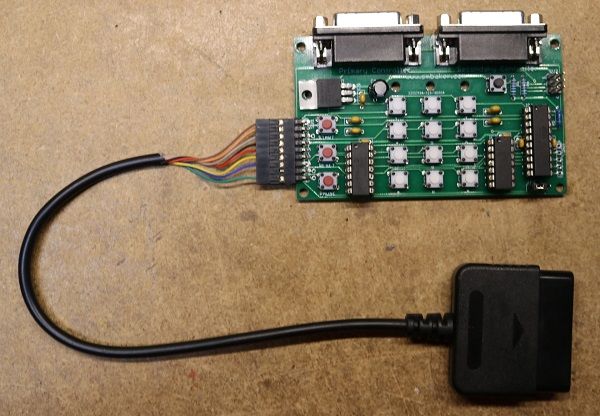
Atari 5200 Sony PS2 Controller Adapter
"I already built a nifty handheld controller, and I should be enjoying my retro gaming experiences, but I couldn’t help building something new, so here is a PS2-to-Atari5200 adapter Purpose This adapter allows you to use a PS2 controller on an Atari 5200 gaming console. The 5200 was notable at the time for its use of analog joysticks, but the controllers that shipped with the console are pretty lousy. They don’t self-center and they have a mushy annoying feel to them. The fire buttons aren’t very tactile in nature. The controller in my opinion just doesn’t feel or work good. Nevertheless, you have to give the Atari 5200 some respect for trying to be a pioneer in the technology." [...]

Hidden Hall Sensor in ESP32
"Did you know that there is a sensor inside ESP32? This is the HALL SENSOR. It is located inside the metal part of the board in the Tensilica microcontroller chip. In todays video, Ill introduce the Hall sensor, and create a program using the ESP32 to measure the voltage variation when approaching a magnetic field. " [...]
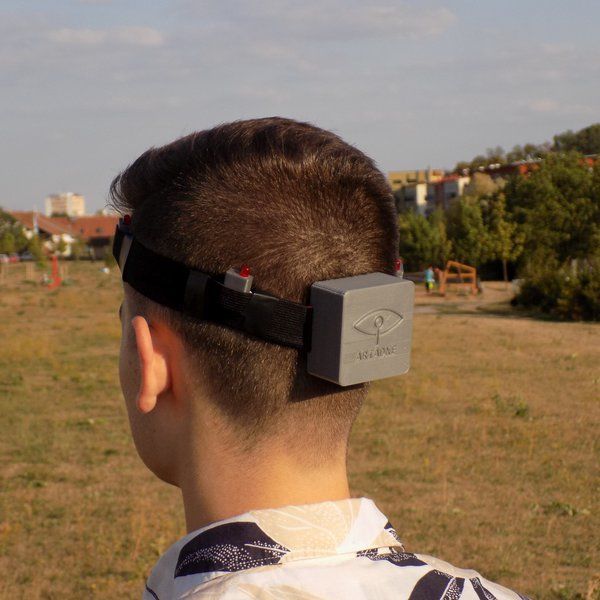
Ariadne Headband
"Arduino-based heaband that uses haptic feedback to navigate blind people. Controlled via Bluetooth using Android app. Ariadne Headband is ongoing project that aims to create haptic navigation for blind people (among others). It uses 4 vibration motors placed in set directions on head and connected to Arduino board. Everything is controlled with Android app via Bluetooth. What is project Ariadne Headband?" [...]
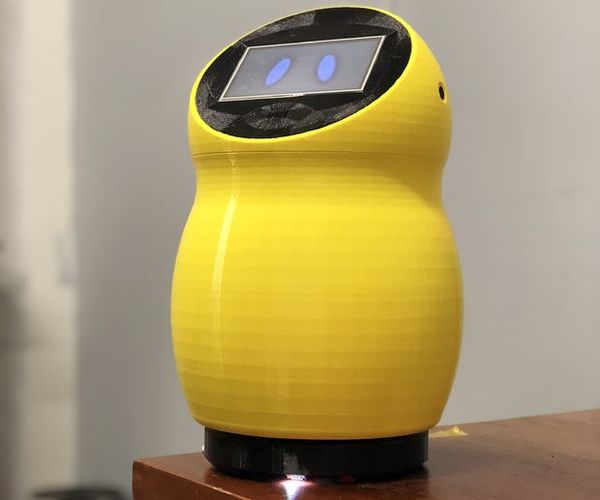
Meet Twinky the Cutest Arduino Robot
"Hi, In this instructable I'm going to teach you how I made my own "Jibo" but called "Twinky" I want to clear this up... THIS IS NOT A COPY! I WAS BUILDING TWINKY AND THEN I REALIZED THAT SOMETHING LIKE THIS ALREADY EXIST :c It has almost the same functions but It doesnt need an internet connection and oviuousley it doesnt need a server. (Of course this make a lot of limitations,comparing with the functions of the Jibo Robot) IT CAN SPEAK! PLAY MUSIC, SET TIMERS, ALARMS, TURN ON/OFF THE LIGHTS OR OTHER APPLIENCES, IT HAS A CALCULATOR AND A WEATHER STATION! DATE & TIME, BLUETOOTH 4.0, EVERYTHING WITH VOICE COMMANDS!!!!" [...]
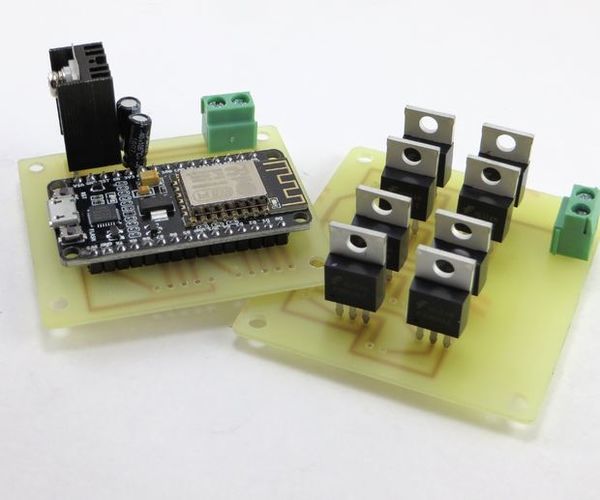
Custom PCBs on a CNC Router
"I bought a CNC router last spring to do some woodworking and to mill aluminum. I'm also an obsessive electronics tinkerer, and I later realized that I had inadvertently taken my tinkering abilities to another level when I added the router to my shop. Unfortunately, simply knowing that I could use the router to make my own Printed Circuit Boards (PCBs) wasn't sufficient to make them suddenly appear in front of me. There's a reasonably steep learning curve. Also, I had zero previous experience in producing or thinking about how to produce a PCB. There is a fair amount of information on the Internet, but it's pretty fragmented, and it took me a while to find everything I needed and put it together in a way that made it possible to go from start to finish." [...]

Semi-passive Cooling of Computer Power Supply
"Hello! The basic idea is that if a power supply with a large power reserve, then there is no need for constant rotation of the fan (just like it was done in the CPU fan). Therefore, if it is reliable to monitor the temperature of the power supply unit elements, then you can stop the fan for a while. And gradually increase the fan speed. I decided to make a fan speed regulator on Arduino nano based on ATMEGA168PA, out of different pieces of other people's projects I made my own. " [...]

ESP8266 WIFI AP Controlled Quadruped Robot
"This is tutorial to make a 12 DOF or four leg (quadruped) robot using SG90 servo with servo driver and it can be controlled using WIFI Web server via smartphone browser Total cost for this project is around US $55 (For Electronic part and Plastic Robot Frame)" [...]
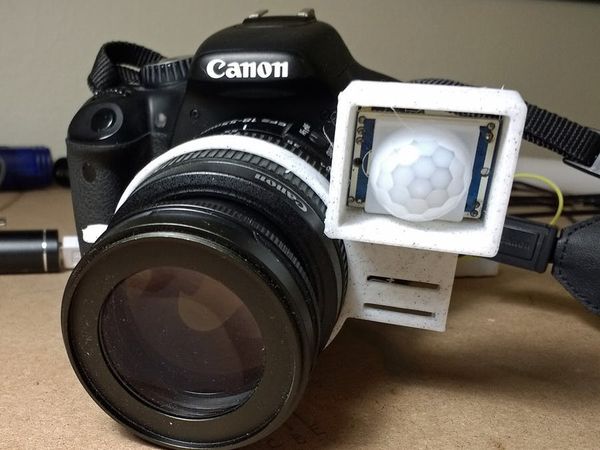
Passive Infrared - PIR Camera Motion Trigger
"A system to trigger a Canon DSLR camera when there is motion in front of it. Uses a PIR, opto-isolator, and not much else! If you have a Canon DSLR (may work with others—I've tested it with a T2i) that you'd like to set up to observe nature and other phenomena that moves, this device will help you do just that. It uses a passive infrared (PIR) sensor—described here among other microcontroller sensing options—to detect motion, then an opto-isolator to connect the ground and trigger pins. No other active components are needed! " [...]
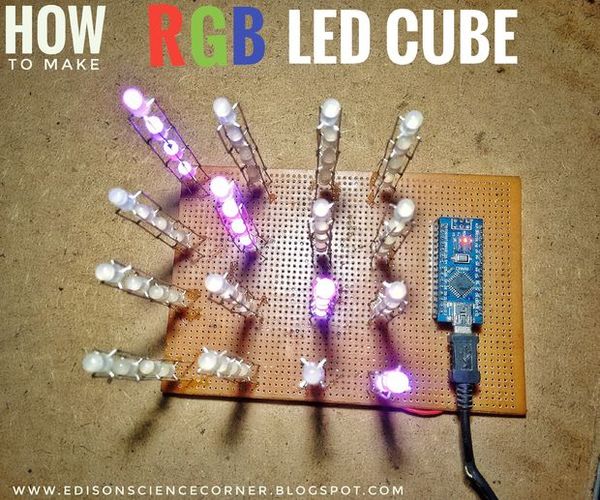
How to Make Rgb Led Cube
"in this instructable i am going to make a rgb led cube(charlieplex cube) ok...what is charlieplex cube...? Charlieplexing is a technique for driving a multiplexed display in which relatively few I/O pins on a microcontroller are used e.g. to drive an array of LEDs.The method uses the tri-state logic capabilities of microcontrollers in order to gain efficiency over traditional multiplexing. Although it is more efficient in its use of I/O, there are issues that cause it to be more complicated to design and render it impractical for larger displays. These issues include duty cycle, current requirements and the forward voltages of the LEDs.why charlie cube is differ from other cubes......? Other cubes use shift registers, decade counters, or other components to control all the LEDs and that will increse the making cost." [...]
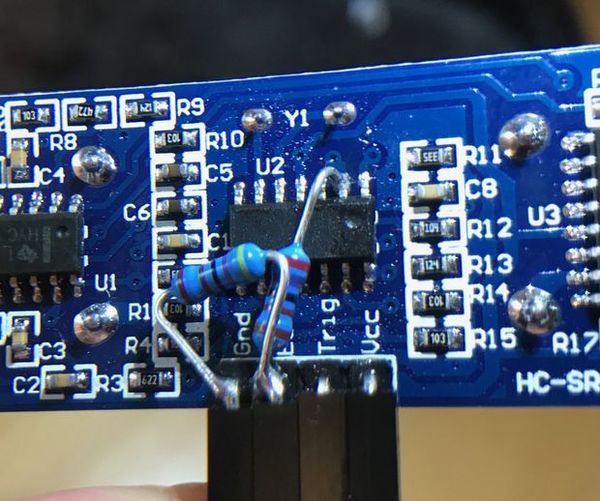
3.3V Mod for Ultrasonic Sensors (prepare HC-SR04 for 3.3V Logic on ESP32/ESP8266, Particle Photon, Etc.)
"TL;DR: On the sensor, cut the trace to the Echo pin, then re-connect it using a voltage divider (Echo trace -> 2.7k -> Echo pin -> 4.7k -> GND).If you are anything like me, you have come to know and like the HC-SR04 as the de facto standard for low-cost ultrasonic distance sensing for 5V-based Arduino projects. That's why I have quite a few of them lying around here. But the world of hobby electronics has been steadily moving from 5V towards 3.3V. The Raspberry Pie and many other boards, like those based on the ESP8266, ESP32 or boards like the Particle Photon, are working with 3.3V logic on their input/output pins. If we connect the sensor to 5V power and at the same time to 3.3V pins, the Echo pin's output will also be 5V and will most likely destroy the 3.3V pins of our microcontroller board. We could try to connect an as-is HC-SR04 to 3.3V power and will be able to get measurements, but unfortunately, these will often be much less accurate." [...]

Make Your Own PlayStation Classic
"This is an PS1 case modified to house a Raspberry Pi with RetroPie but uses the original controllers. Let the fun begin! I made this a little while ago but with the impending release of the PlayStation Classic, I thought it was worth publishing my work on how I did it as I had documented things along the way. I've also posted a YouTube video showcasing what I did. " [...]
That's all Folks!


